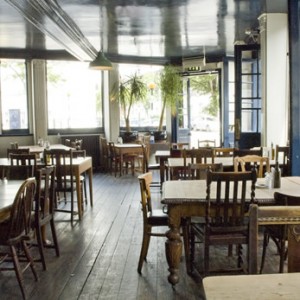I’ve just signed up to Fish2fork’s DinerRatings.
This is a new service, launched this week by the fish sustainability campaigning group to coincide with a revamp of its website.
Fish2fork aims to provide an instant online rating of restaurants, according to the impact their seafood has on the seas and marine life. It invites diners to score a restaurant’s approach to sustainable seafood and post a review even as they’re sitting at the table. The group wants to “drive a clamour for change across the whole industry”.
I’ve been concerned for some time that many restaurants still don’t tell me where they obtain the fish they put on the menu – although there are some admirable exceptions, examples of best practice. The best way is to look up Fish2fork’s list before you leave home, so you know in advance.
Fish2fork assesses 611 restaurants in England, 11 in Wales, 55 in Scotland and nine in Northern Ireland. Which leaves big gaps. A small campaigning body couldn’t possibly get round them all. What about pubs, Indian restaurants, fast food outlets? So what if you are going somewhere, such as my local town, that doesn’t have a single place listed? You have to take your chance.
Most people in Britain must know by now that certain species of fish are threatened by overfishing. And, I suspect, given the choice, many would consider switching to a fish that wasn’t in so much danger. Do they actively look for that information when they order fish in pubs and restaurants, though? I doubt it.
Would they read that guidance if it were there, and act on it? I believe some would, and that number would grow as word got about.
Many of the better restaurants will tell you where they source their meat. Knowing that an animal was well looked after by a farmer who cared does matter, but cows aren’t going to become extinct even if they are badly treated.
It’s different with fish. Innocent diners could unwittingly be ordering something that comes from a population that is dangerously depleted, or could be driven to extinction? I think many would be reassured to know that the fish on their plate is not in that category and came from a sustainable source. They would think better of the restaurant for telling them, too.
Despite the excellent work of Fish2fork, which now also reviews restaurants in France, Spain, Belgium, the USA and Switzerland, the campaigning by celebrity chefs such as Hugh Fearnley-Whittingstall and Jamie Oliver, and the work in the EU to end the practice of throwing fish back into the sea, dead, because they are the wrong species or size, progress to make the cause of sustainable fish a mainstream consumer issue has been slow.
Back in my local town, I’m resigned to not chosing fish. I know the menu won’t tell me what I need to know. I’ve given up asking the waiter, who generally has to resort to asking the chef. He or she may be the only person in their entire place who does know where the fish comes from.
Although we should not assume even that. This is an entry from Fish2fork’s restaurant guide.
“Xxxx did not want to answer our questions about the source of its seafood – in any more detail than, ‘The cash and carry.’ The online menus leave us, and customers, no more enlightened. A little more information about the sea bass, for instance, would be welcome. Is it wild or farmed? It makes a difference: wild sea bass stocks have declined dramatically and scientists believe catches need to be reduced by 20 per cent.”
Another “[did] not seem to have worked out the finer detail of sustainability” or the make a virtue of its offering, even when it could have.
“Xxxx seems to understand the importance of the health of the oceans and stocks of seafood as it highlights ‘sustainable white fish’ in its ‘spectacular fish taco’. This fish, they tell us, is tilapia – why not say so on the menu? – and is indeed a good choice. We are concerned to see whitebait on the menu. Whitebait consists of small, juvenile fish that have never had the chance to spawn and are on the Marine Conservation Society’s list of fish to avoid. We would also like to know if the king prawns are certified as sustainable or if they originate from a fishery or farm where either overfishing or the use of fishmeal damages the health of the oceans.”
So how can we help? Open a DinerRatings account and simply score the restaurant of you choice. Either choose it from a drop down menu, or add it yourself.
Contributors’ scores in their reviews will be averaged out to create an online rating to indicate the restaurant’s approach to sustainable seafood. The scores range from 5 blue forks (“Meets the highest standards of seafood sustainability”) to 1 blue fork (“Demonstrates at least basic awareness of sustainability but could do more”). Restaurants which do not achieve a minimum score get a 1 red fork rating (“has not met the minimum requirements”), though it does not necessarily indicate that they are using unsustainable supplies of seafood.
Fish2fork aims to help us champion the restaurants that are doing it right. It wants to encourage them to be open about the seafood they serve, and improve its sourcing.
“We hope DinerRatings will let restaurant customers put enormous pressure on the restaurant industry to use seafood that has been caught or raised sustainably,” said Tim Glover, Fish2fork’s managing director.
“Perhaps this will in turn exert pressure further up the supply chain, in particular on the fishing industry itself, to behave sustainably.
“The more people who take part the stronger is the message that overfishing is simply unacceptable. Sustainability should be treated as just as important when it comes to choosing ingredients as freshness and taste.”

